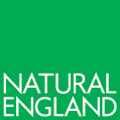LIFE Moor Space: project information note 1
Published 26 January 2022
Applies to England
LIFE Moor Space focuses on the restoration of degraded lowland raised bog at Thorne Moor Special Area of Conservation (SAC. It builds on the previous EU funded project “THAT’S LIFE – Restoring the Humberhead Peatlands”.
LIFE Moor Space is a 5-year project, which started in October 2021. It has a special focus on trialling sustainable solutions for the SAC’s issues. The project is led by Natural England, working with closely with Lincolnshire Wildlife Trust.
Project aims and objectives
The project will contribute to delivering the Thorne Moor SAC vision of a functioning lowland raised bog and a self-sustaining ecosystem that:
- accumulates carbon
- regulates water flow
- supports a rich variety of habitats and species
- supports recreational and cultural activities
- is resilient to climate change
The project will:
- remove scrub and trees to reduce evapo-transpiration and remove invasive species (rhododendron)
- restore water levels on new acquisitions and adjacent raised mire to optimum levels (+/-20cm).
- plant sphagnum species to create and stimulate peat-forming vegetation to recolonise
- deliver a wildfire management plan to ensure future protection of the site.
- create conditions for coherent water level management to aid bog re-establishment by acquiring land or working in partnership with land managers within, and adjacent to, the SAC
- providing practical advice, training and support to identify alternative funding that delivers land uses that work for them and the SAC
- trial public and private collective 30-year agreements for carbon storage within the SAC with International Union for the Conservation of Nature (IUCN) UK Peatland Programme and promote complementary agri-environment funding.
- promote better understanding and awareness of the value of the SAC and its habitat to different audiences in the UK and Europe The project will focus on technical audiences, actively replicating and transferring lessons learned and best practice at other sites within the EU and UK.
Important issues affecting the area
Drainage and water levels
Higher parts of the SAC are currently too dry to achieve the stable water levels required to allow peat-forming vegetation to develop. These areas need to be made wetter by reducing the surface run-off of rainwater into ditches and away from the SAC.
Where peat was milled leaving very low-lying ground, flooding can prevent revegetation of the bare peat by drowning-out seedling cottongrasses and by washing away sphagnum. Fragmented land ownership reduces the scope for managing water levels over wide areas. Unusually, the peatland transitions directly to productive drained farmland, resulting in 90% of the SAC lacking a hydrological buffer.
Scrub
Scrub and invasive rhododendron continue to thrive on some areas within the SAC. This increases water loss through high levels of evapotranspiration and shades out incipient peat-forming vegetation. Rhododendron is tolerant of wet areas and needs total removal from the SAC.
Increased nutrients/pollution The management of the surrounding land can negatively affect the condition of the SAC through generating atmospheric deposition of nutrients. Positive changes in the hydrological management of adjacent land can enhance restoration of the SAC by allowing higher water levels to be maintained up to the SAC boundary.
Climate change
Increasingly wet winters and drier summers create a challenge to maintaining optimum hydrological conditions and lead to a heightened risk of wildfires in summer. Increasing the capacity for water level management on the Moors is therefore particularly important. The average annual precipitation has been less than 600mm and agricultural drought occurs on average in every other year. Climate change is projected to increase the frequency and severity of drought as well as frequency of high rainfall events.
Land ownership around the SAC
An underlying problem of fragmented land ownership within the SAC fringes, compounds these issues and impedes coherent management of the bog overall. The scale of the restoration task at Thorne has meant NE has previously focused its limited resources on restoring its own land, this project will enable more partnership working to seek solutions.
Contact: ynl.hub@naturalengland.org.uk
LIFE Moor Space (LIFE20 NAT/UK/000697) has received funding from the LIFE Programme which is the European Union’s funding instrument for the environment. Funding is awarded for best practice, innovation and demonstration projects that contribute to the objectives of Natura 2000
Natura 2000: The project covers the Thorne Moor Special Conservation Area which is part of the Natura 2000- a network of the very best areas for wildlife across Europe. All Nature 2000 sites have special protection under European and UK laws.

